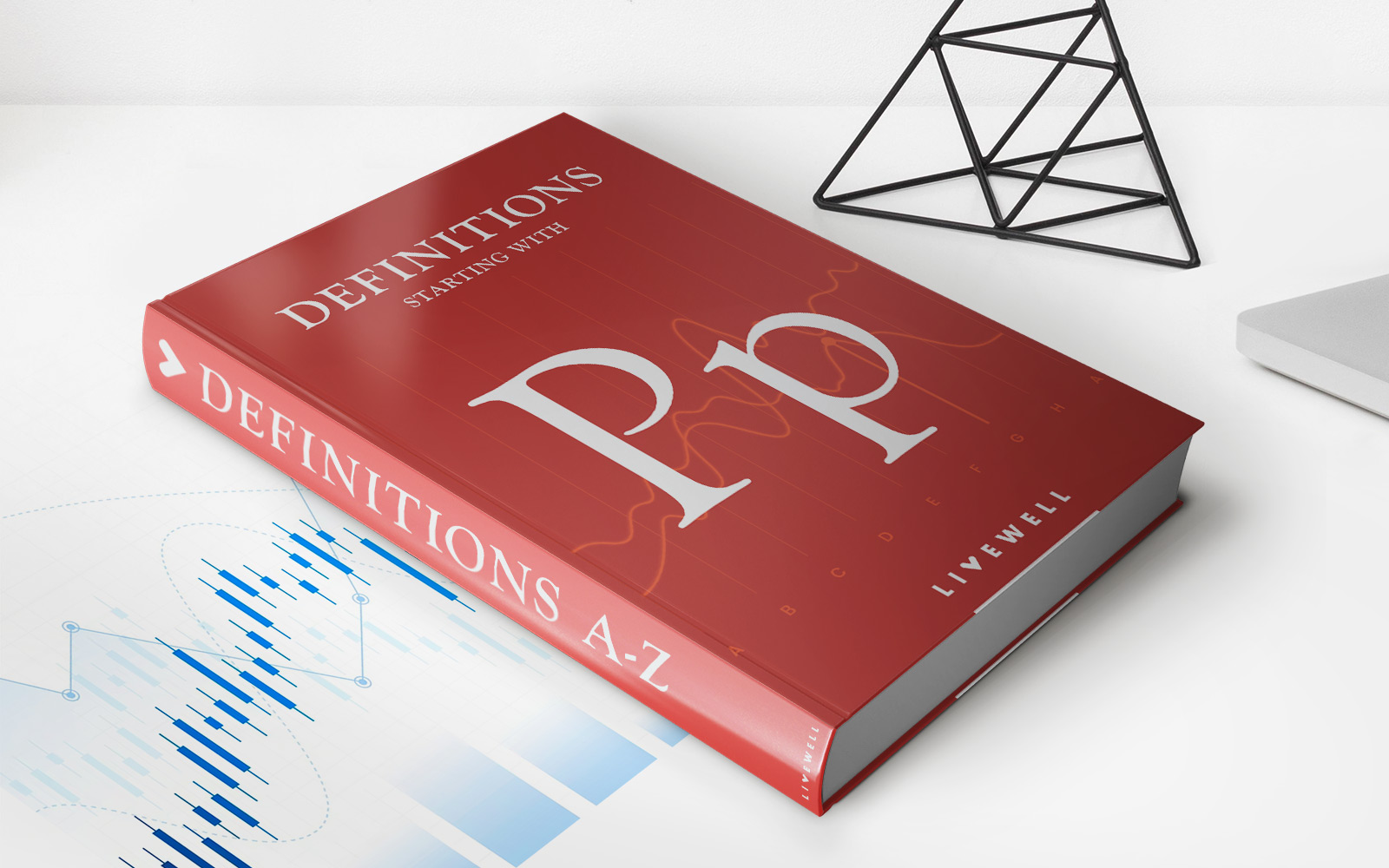

Finance
How To Add A New Baby To Insurance
Published: November 24, 2023
Learn how to add a new baby to your insurance plan and ensure the financial well-being of your growing family. Manage your family's finances and protect their future with our expert finance tips.
(Many of the links in this article redirect to a specific reviewed product. Your purchase of these products through affiliate links helps to generate commission for LiveWell, at no extra cost. Learn more)
Table of Contents
- Introduction
- Step 1: Review Your Current Insurance Policy
- Step 2: Determine When to Add the New Baby
- Step 3: Contact Your Insurance Provider
- Step 4: Provide Necessary Documentation
- Step 5: Understand Changes in Premiums
- Step 6: Update Other Insurance Policies
- Step 7: Review Coverage for the Entire Family
- Step 8: Consider Additional Insurance Options
- Conclusion
Introduction
Adding a new baby to your insurance policy is an important step to ensure that your little one is protected and covered for any unforeseen circumstances. From healthcare to life insurance, there are several aspects to consider when making this addition. This article will guide you through the process of adding a new baby to your insurance policy, providing you with the necessary steps and considerations to help you navigate this important milestone.
Welcoming a new baby into your family is an exciting time, but it is also a time that requires careful planning and preparation. One of the areas that you need to address is the addition of your new bundle of joy to your insurance coverage. By taking the necessary steps, you can ensure that your baby is well-covered and that their healthcare needs are taken care of.
Throughout this article, we will outline the main steps involved in adding a new baby to your insurance policy. From reviewing your current insurance policy to understanding changes in premiums and considering additional insurance options, we will cover everything you need to know to make the right decisions for your family. So let’s dive in and start the process of protecting your little one!
Step 1: Review Your Current Insurance Policy
The first step in adding a new baby to your insurance policy is to review your current policy. This will help you understand what coverage you currently have and what changes need to be made. Look for any exclusions or limitations that may affect your baby’s coverage.
Start by reviewing your health insurance policy. Check if it covers prenatal and postnatal care, delivery expenses, and vaccinations for your baby. If your policy doesn’t provide adequate coverage, you may need to consider upgrading to a plan that does.
Next, examine your life insurance policy. Determine if it provides sufficient coverage to protect your growing family’s financial future. Consider increasing the coverage amount to account for your baby’s needs and expenses.
Don’t forget to review your auto insurance policy as well. If you plan to be driving your baby around, ensure that your policy includes coverage for any potential accidents or injuries involving your little one.
Take note of any deductibles, co-pays, or out-of-pocket expenses associated with your current policies. This information will be useful when comparing coverage options and estimating your overall costs.
If you have other insurance policies such as homeowner’s insurance or disability insurance, review them too. While these policies may not directly relate to your baby’s coverage, it’s important to ensure that your overall insurance coverage aligns with your changing family situation.
By thoroughly reviewing your current insurance policies, you will have a better understanding of your existing coverage and identify any gaps that need to be addressed with the arrival of your new baby.
Step 2: Determine When to Add the New Baby
Once you have reviewed your current insurance policies, the next step is to determine when to add the new baby to your coverage. It is important to be timely in making this addition to ensure that your baby is protected from the moment they arrive.
In the case of health insurance, most policies require you to add your baby to the policy within a certain timeframe after their birth. This timeframe is typically within 30 days, but it’s essential to check with your insurance provider for specific deadlines. Failing to add your baby within the specified timeframe may result in delays in coverage or increased costs.
When it comes to life insurance, you may want to consider adding your baby as a beneficiary as soon as possible. While this won’t affect the coverage immediately, it ensures that your child will be protected financially in the event of your passing.
It’s also worth noting that adding your new baby to your auto insurance policy should be done as soon as they are born. This will ensure that they are covered in case of any accidents or injuries while traveling with you.
By determining the appropriate time to add your new baby to your insurance coverage, you can ensure that they are protected and their needs are met from the very beginning. Be proactive and take the necessary steps in a timely manner to provide your little one with the security they deserve.
Step 3: Contact Your Insurance Provider
After reviewing your current insurance policies and determining the right time to add your new baby, the next step is to contact your insurance provider. Reach out to them to inform them about the addition to your family and start the process of adding your baby to your coverage.
Most insurance providers have dedicated customer service lines or online portals that you can use to initiate this process. Contact them and provide the necessary information about your baby, such as their name, date of birth, and any other details requested by your provider.
Be prepared to provide documentation to support the addition of your baby to your insurance policies. This may include a copy of their birth certificate or other identification documents. Your insurance provider will inform you of the specific documents they require, so make sure to ask for any necessary guidelines in advance.
During this step, it’s also a good idea to inquire about any paperwork or forms that need to be filled out. Your insurance provider will guide you through the process and provide you with the necessary paperwork to complete the addition of your baby to your policies.
When contacting your insurance provider, take the opportunity to ask any questions you may have regarding coverage, premiums, or any other concerns. This will help clarify any uncertainties and ensure that you have a complete understanding of how the addition of your baby will impact your insurance policies.
Remember to keep a record of any correspondence or documentation provided during this step. This will serve as proof of addition and can be useful in case of any future disputes or inquiries.
By contacting your insurance provider and providing them with the necessary information, you can begin the process of adding your new baby to your insurance coverage and ensure that they are protected under the policy.
Step 4: Provide Necessary Documentation
After contacting your insurance provider and initiating the process of adding your new baby to your coverage, the next step is to provide the necessary documentation as required by your insurance provider. This documentation will serve as proof of your baby’s identity and eligibility for coverage.
The specific documents you need to provide may vary depending on the type of insurance you have and the requirements of your insurance provider. In most cases, you will be asked to provide a copy of your baby’s birth certificate as proof of their date of birth and identity.
Additionally, some insurance providers may require additional documents such as a social security number or proof of legal guardianship. It’s important to familiarize yourself with the specific documentation requirements and gather all the necessary paperwork in advance to avoid any delays in the process.
Make sure to keep copies of all the documentation you submit to your insurance provider for your records. Having a record of the documents will be helpful in case of any future inquiries or disputes.
If you are unsure about the specific documentation requirements or need assistance in gathering the necessary paperwork, don’t hesitate to reach out to your insurance provider. They will be able to guide you through the process and answer any questions you may have.
By providing the necessary documentation, you are ensuring that your insurance provider has accurate and up-to-date information about your baby, allowing them to update your coverage accordingly. This step is crucial in ensuring that your baby receives the full benefits and protection offered by your insurance policies.
Step 5: Understand Changes in Premiums
Adding a new baby to your insurance coverage can result in changes to your premiums. It’s important to understand how the addition of your baby may impact the cost of your insurance policies and plan your budget accordingly.
Health insurance premiums may increase when adding a new baby to your policy. Some insurance providers charge higher premiums for family coverage compared to individual or couple coverage. Contact your insurance provider to understand the specific changes in premiums and how they will be reflected in your monthly or annual payments.
In the case of life insurance, adding your baby as a beneficiary generally does not impact the premiums you pay. However, if you decide to increase your coverage amount to provide additional financial protection for your growing family, it’s likely that your premiums will increase. Consult with your insurance provider to get a clear understanding of the potential cost implications.
Auto insurance premiums may also be affected when adding your baby to your policy. The addition of a new driver to your household, even a baby who won’t be driving, can result in changes to your premiums. It’s a good idea to reach out to your insurance provider to discuss any adjustments in coverage and premiums that may occur.
Take the time to review the changes in premiums and assess how they will fit into your overall budget. It’s important to plan accordingly and ensure that you can comfortably afford the increased costs associated with adding a new baby to your insurance policies.
If you find that the changes in premiums are higher than expected or not within your budget, consider exploring other insurance options or reaching out to different insurance providers for quotes. This can help you find more affordable coverage options while still ensuring that your baby is adequately protected.
By understanding the potential changes in premiums, you can prepare financially and make informed decisions about your insurance coverage. It’s always a good idea to review your policies and compare different offerings to find the best balance between coverage and affordability for your growing family.
Step 6: Update Other Insurance Policies
When adding a new baby to your insurance coverage, it’s important to consider updating your other insurance policies to ensure that your entire family is adequately protected. While health insurance and life insurance are the most obvious policies to update, there are other types of insurance that may need attention as well.
One important policy to review is your homeowner’s or renter’s insurance. With the addition of a new baby, you may have acquired valuable items such as baby gear, furniture, and electronics. Make sure that your policy provides sufficient coverage for these new additions to your household. Additionally, consider adding personal liability coverage to protect against any accidents or injuries that may occur on your property.
If you have a disability insurance policy, review it to ensure that it adequately covers any income loss that may occur if you need time off work following the arrival of your new baby. Check for any waiting periods or restrictions that may apply, and consider adjusting your coverage if needed.
Furthermore, if you have a pet at home, it may be worth considering pet insurance. Pets can be unpredictable, and accidents or illnesses can lead to expensive veterinary bills. Adding pet insurance can provide financial protection and peace of mind when it comes to your furry family member.
Take the time to review these additional insurance policies, ensure that they align with your current needs and any changes resulting from the arrival of your new baby. Consider reaching out to your insurance provider to discuss any necessary updates or adjustments to your coverage.
Updating these other insurance policies will help ensure that your entire family, including your new baby, is well-protected across all aspects of your lives. It’s an important step in taking care of the well-being and financial security of your growing family.
Step 7: Review Coverage for the Entire Family
Adding a new baby to your insurance coverage is an opportune moment to review the insurance coverage for your entire family. Take this time to assess the adequacy of your current policies and make any necessary adjustments to ensure that everyone is protected.
Start by reviewing your health insurance policy. Consider whether the coverage levels and benefits are suitable for your family’s needs. Evaluate if there are any gaps in coverage that need to be addressed, such as specialized care for your baby or additional coverage for specific medical conditions.
Next, review your life insurance policies. Assess whether the coverage amounts are sufficient to protect your family’s financial well-being in case of a loss. Consider any changes in financial responsibilities or future expenses that may warrant an adjustment in coverage.
Take a closer look at your auto insurance policy as well. Evaluate the coverage limits and consider whether they are appropriate for your family’s needs. Determine if there are any discounts or additional coverage options available to help you save on premiums while maintaining adequate protection.
Don’t forget to assess your homeowner’s or renter’s insurance. Review the coverage limits for personal belongings, liability, and any riders or endorsements you may have. Ensure that your policy adequately protects your family and covers any valuable assets you possess.
During this review, it may also be helpful to consult with an insurance professional who can provide guidance and help you identify any areas where additional coverage may be beneficial. They can help tailor your insurance portfolio to your family’s specific needs and assist in making any necessary updates.
By reviewing the coverage for the entire family, you can ensure that everyone’s insurance needs are met and that you have the appropriate protection in place. It’s an important step in safeguarding your family’s financial well-being and providing peace of mind.
Step 8: Consider Additional Insurance Options
As you navigate the process of adding a new baby to your insurance coverage, it’s worthwhile to consider additional insurance options that can provide extra protection for your growing family. These additional insurance policies can offer a layer of security and help safeguard your family’s financial well-being.
One important insurance option to consider is disability insurance. This type of coverage provides income replacement in the event that you are unable to work due to a disability or illness. With a new baby in the picture, having disability insurance can offer peace of mind knowing that you have a financial safety net to support your family if you are unable to work for an extended period.
Another option worth considering is an umbrella insurance policy. Umbrella insurance provides liability coverage above and beyond the limits of your existing policies such as auto and homeowner’s insurance. This type of coverage can protect you and your family from significant financial loss in the event of a lawsuit or other unforeseen circumstances.
If you are a homeowner, it may be prudent to explore flood insurance, especially if you live in an area prone to floods. Standard homeowner’s insurance typically does not cover flood-related damages, so having a separate flood insurance policy can provide valuable protection in case of a flood event.
As your family grows, you may also want to consider a college savings plan, such as a 529 plan. This type of investment account allows you to save for your child’s future education expenses while providing potential tax advantages. Starting early can give you more time to accumulate funds for your child’s educational needs.
Lastly, think about purchasing a personal articles insurance policy. This type of coverage protects valuable items such as jewelry, artwork, or collectibles that may exceed the limits of your homeowner’s insurance. It ensures that these items are adequately protected against loss or damage.
When considering additional insurance options, it’s essential to weigh the cost of the coverage against the potential benefits and assess what fits within your budget. Consult with insurance professionals to understand the various insurance options available and determine which ones best align with your family’s specific needs.
By exploring additional insurance options, you can address any potential gaps in coverage, enhance your family’s financial security, and have peace of mind knowing that you have comprehensive protection for your growing family.
Conclusion
Adding a new baby to your insurance coverage is an important step in protecting your growing family’s well-being and financial security. By following the steps outlined in this guide, you can navigate the process smoothly and ensure that your baby is properly covered.
Start by reviewing your current insurance policies to understand what coverage you already have and identify any gaps that need to be addressed. Determine the appropriate time to add your new baby to your policies, keeping in mind any deadlines set by your insurance provider.
Contact your insurance provider and provide the necessary documentation to add your baby to your coverage. Understand how the addition may impact your premiums and budget accordingly. Additionally, take the opportunity to review and update other insurance policies to ensure comprehensive protection for your entire family.
Consider looking into additional insurance options that can provide added security, such as disability insurance, umbrella insurance, or flood insurance. Assess the costs versus the benefits of each option and choose the ones that align with your family’s specific needs.
Throughout this process, don’t hesitate to reach out to insurance professionals for guidance and advice. They can help navigate the complexities of insurance coverage and provide personalized recommendations based on your unique circumstances.
Remember, the arrival of a new baby brings joy and excitement, but it also comes with added responsibilities. Taking the time to review and update your insurance coverage ensures that you are prepared for any unexpected events and can provide the best possible protection for your growing family.
By following these steps and making informed decisions, you can rest assured knowing that your new baby is well-covered and that your family’s financial future is safeguarded. Congratulations on this exciting new chapter in your life, and may your family continue to thrive and prosper.














